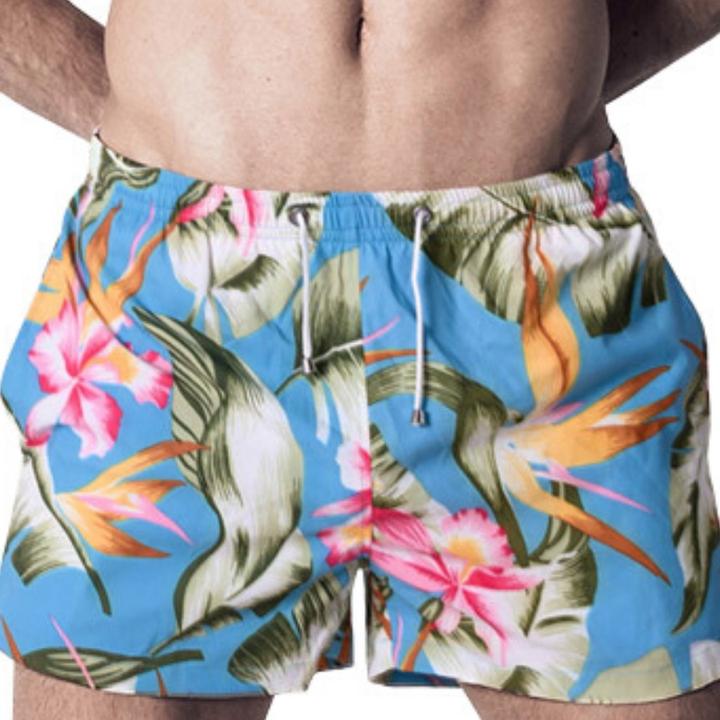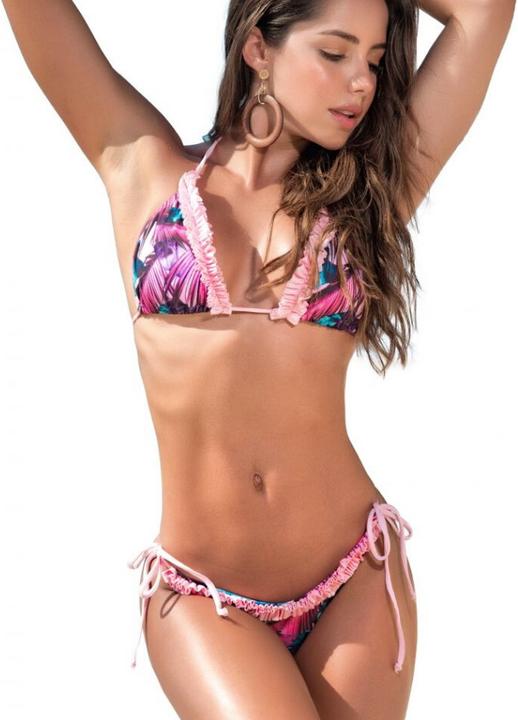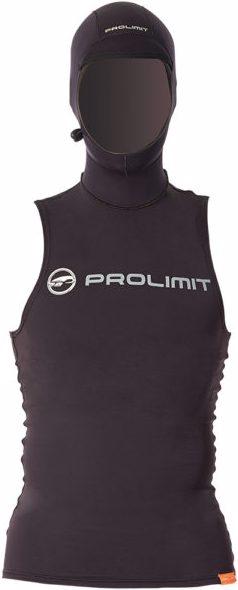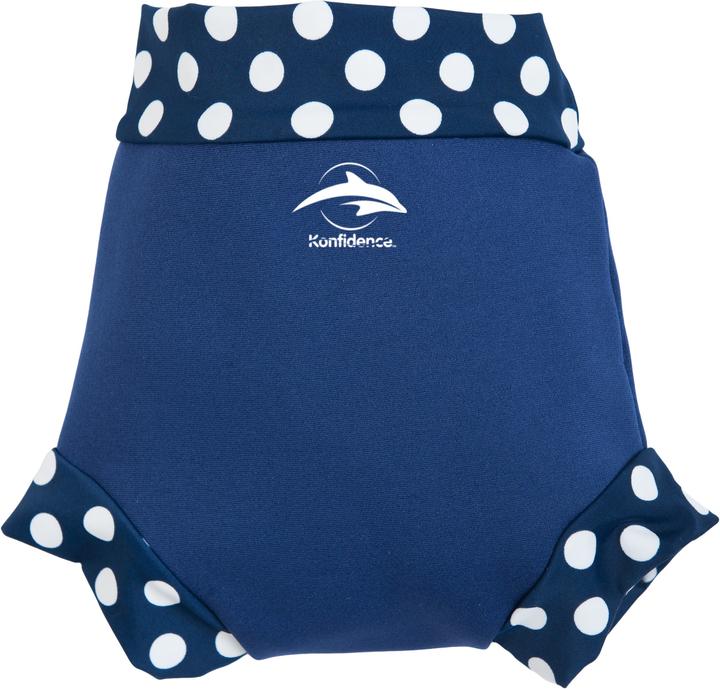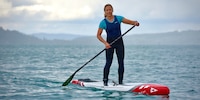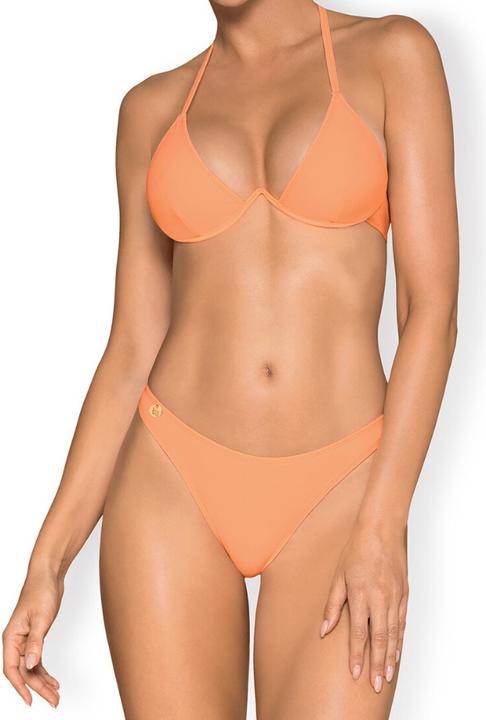

Swimwear Guide: which fabric suits you?
When buying a bikini or swimming trunks, not only the design, but also the material has to be taken into consideration. Find out in this article what Lycra, Nylon and Polyester have to offer.
Did you know that some swimwear is better worn only for sunbathing and not for swimming? Finding the fabric of your swimwear dreams can be tricky, as each material has its strengths and weaknesses. Some fabrics fade faster, others are more durable, and some wear out less quickly. When purchasing your next swimwear, don’t just pay attention to the design and fit, but also to the material.
Nylon
One of the most common materials in swimwear is nylon, which is a polyamide. It’s not only soft and stretchy but hugs your body in all the right places. Another perk of these synthetic fibres is that they’re breathable and hardly absorb moisture. Instead, they transport water from the inside to the outside, and it evaporates on the fabric surface. As a result, the swimsuit dries quickly. This way, you don’t soak in your wet swimwear on a sunbed for hours.
A disadvantage of nylon is that the material isn’t light resistant. Colours fade faster due to intense UV exposure. In comparison to polyester, nylon sheds faster and isn’t as colour fast. Especially prints can fade quickly on the material. To preserve the colour or the fabric, I recommend washing by hand.
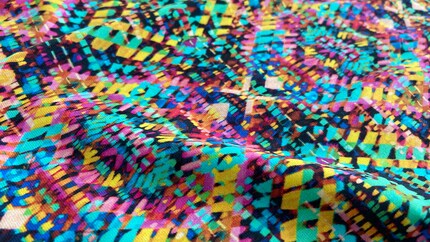
Lycra
If staying true to form is what your heart desires, Lycra – also known as spandex or elastane – is the right fit for you. Your swimsuit will keep its original shape, whether you stretch it out, put it on or take it off – it’ll always go back to its original form. In addition, the material is bi-elastic, so stretching it horizontally or vertically is no problem. Because the synthetic fibres are quick drying and breathable, they’re a perfect partner for the beach or the pool.
Lycra comes in two versions: glossy or matt. Colours show up particularly well on the gloss, as its shimmering surface reflects the sun’s rays. However, it’s not completely opaque, so you’ll need a swimsuit with a lining. In the matt version, the elastane content is higher and therefore more opaque. This fabric is ideal for bikinis, swimsuits and skintight speedos.
In terms of patterns and colours, pastels or pale tones look best on this material. If you prefer bright pops of colour, I’d advise polyester. Further advantages of Lycra: the material isn’t quite as sensitive as other fabrics to cosmetics such as deodorants, perfumes or sunscreen. To enjoy your swimwear as long as possible, you should wash it by hand.
Polyester
This fibre can be put through the wringer: since chlorine or UV rays can’t harm it, it’s considered particularly durable. Polyester absorb dyes, making the material ideal for prints and bright neon tones.
The synthetic fibres push moisture to the outside, so the swimsuit dries quickly. Otherwise you would freeze after swimming. Instead, the water is transported to the surface of your swimsuit, where it evaporates.
Polyester is durable and tear- and heat-resistant. Polyester swimsuits can be washed in the washing machine.

Scuba
There’s neoprene, and there’s scuba. Many confuse the two. Scuba is a double-sided knit and is made of a polyester-elastane blend. Unlike neoprene, the rubber-like material is breathable and reminiscent of jersey (underside) and neoprene (top) in terms of feel. Although scuba is comparatively heavy and thick, it feels soft and hugs your body like a second skin. Despite its thickness, its quick-drying and easy to clean. It can be machine washed at 30 degrees Celsius.
Neoprene
Neoprene is a synthetic rubber with a foam layer that insulates heat. It’s airtight and waterproof. These properties make the material perfect for diving suits. Despite its thickness, the material hugs your silhouette. This ensures an optimal fit when worn. Because neoprene is free of skin-irritating latex, this «fabric» is also ideal for babies and children’s swimwear.
Velvet
Velvet fabrics are becoming increasingly popular for swimwear. The material is an eye-catcher and it also feels nice. Make sure your bikini or swimsuit is lined so at least the inner lining, which is in direct contact with your skin, dries quickly. While individual splashes drop off the fabric, the material soaks up with water after jumping into the cool water if it hasn’t been chemically treated during production.
One advantage of velvet is that its short fibres make it near impossible for dirt to cling onto it. Its density makes it a durable material. Velvet is sensitive to heat, so hand-washing is a must. To avoid creases, hang it on a hanger to dry.
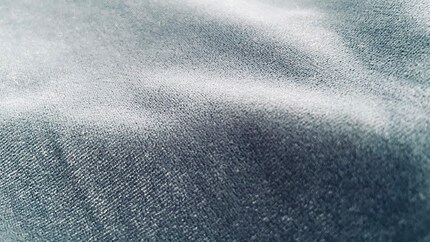
In order to enjoy velvet swimwear as long as possible, it’s best worn for sunbathing. The same applies to swimwear made of cotton or crocheted pieces. Chlorine and seawater affect these materials in the long run and make the fibres brittle, so they quickly look beaten.
When I’m not exploring the depths of the sea as an open water diver, I enjoy plunging into the world of fashion. On the streets of Paris, Milan and New York is where I keep my eyes peeled for the latest trends. And I’ll show you how to take them from the catwalk to your everyday life.
Practical solutions for everyday problems with technology, household hacks and much more.
Show all